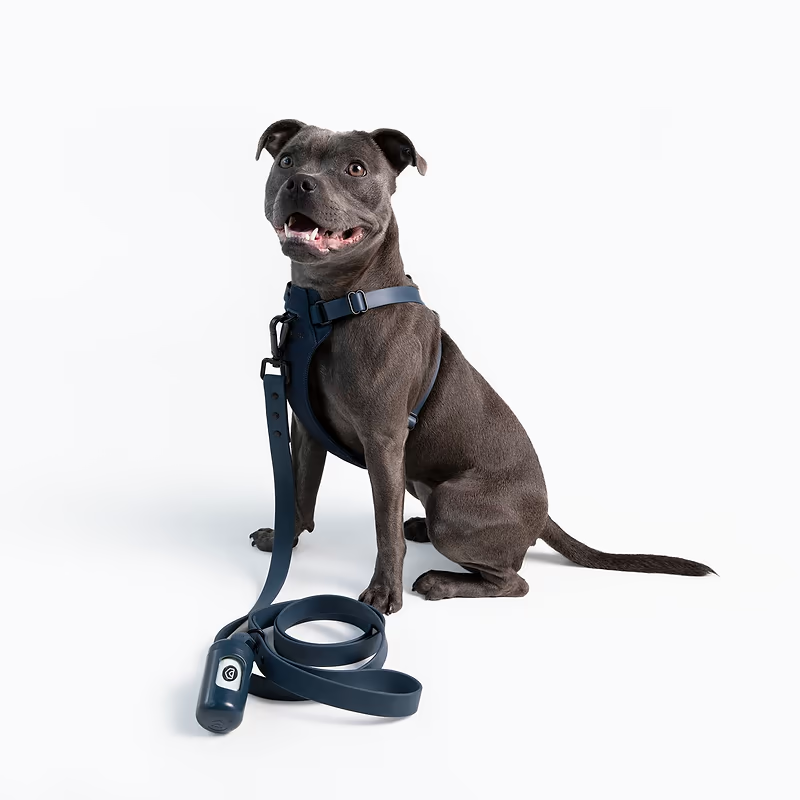Dog harnesses have become an essential tool for pet owners, especially when it comes to walking and managing dogs safely. A well-designed harness provides better control during walks and helps distribute the pressure evenly across a dog’s chest and shoulders, reducing strain on their neck. This is particularly beneficial for dogs that pull, as a harness prevents the injury that a collar could cause by focusing the pressure solely on their neck.
Whether you own a puppy, an older dog, or a breed that is prone to respiratory issues, like Pugs or Bulldogs, using a harness can make a significant difference in your dog’s comfort and safety. With so many styles and materials available, it’s essential to understand how to choose the right harness for your pet. Let’s explore the various types of harnesses, how to ensure a proper fit, and tips for maintaining them.
Why Your Dog Should Wear a Harness
Harnesses are more than just an alternative to collars; they provide several unique benefits for specific types of dogs. Dogs that pull on the leash, for example, are at risk of injuring their neck or trachea when wearing a traditional collar. A harness redistributes the pulling pressure to their chest, which is a safer and more effective way to manage leash training.
Brachycephalic dogs, including breeds like French Bulldogs and Pugs, are particularly prone to respiratory problems due to their short snouts. These dogs often have necks as wide as their heads, which means they can easily slip out of a collar. A harness, which securely fits around their body, helps reduce the chances of escape while also being gentler on their airway.

How to Properly Fit a Dog Harness
Getting the right fit for a dog harness is crucial to its effectiveness. A harness that is too tight can cause discomfort, while one that is too loose may allow your dog to slip out of it. The first step in finding the correct size is measuring your dog. You’ll need two key measurements: the circumference around the base of the neck where it meets the shoulders, and the widest part of your dog’s chest, which is typically just behind the front legs.
After putting the harness on your dog, test it by pulling gently in different directions to ensure that your dog cannot slip out. Make sure their movement is unrestricted and that the harness doesn’t cause any rubbing or chafing. Adjust the fit as needed, especially if your dog has a long or fluffy coat, which may require tighter straps to keep the harness secure.
Different Types of Dog Harnesses
When selecting a dog harness, there are various types to consider, each designed for different purposes. Comfort harnesses are typically made from materials like nylon, leather, mesh, or neoprene. Nylon harnesses are durable and affordable but may trap heat, while leather is stylish but requires more maintenance. Mesh harnesses are lightweight and breathable, making them ideal for warmer climates, though they may not be as durable. Neoprene harnesses are water-resistant and perfect for dogs that love swimming, but they might trap heat and moisture.
Another important factor to consider is where the leash attaches. Front-clip harnesses are excellent for dogs that pull, as they help redirect your dog toward you. Back-clip harnesses are easier to clip on and are typically used for dogs that are already well-behaved on the leash. Dual-clip harnesses offer the best of both worlds, allowing you to switch between front and back clips depending on your needs.

Keeping Your Dog Safe in a Harness
Once you’ve selected the right harness, it’s essential to check the fit regularly. If your dog loses or gains weight, or if they’ve recently been groomed, the harness may need adjustment. Always ensure that the harness is tight enough to stay secure, but not so tight that it restricts movement or causes discomfort.
Additionally, pay attention to any signs of chafing or irritation. Harnesses should allow free movement of the dog’s legs, and you should ensure that your dog can walk, run, and move without restriction. If your dog is constantly scratching or pulling at the harness, this could be a sign that it’s too tight or not fitted properly.
Maintaining and Cleaning Your Dog’s Harness
Dog harnesses, like any other piece of equipment, require regular maintenance to keep them in good condition. Depending on the material, you may need to clean the harness differently. Leather harnesses need conditioning to prevent drying and cracking, while nylon and neoprene harnesses can be cleaned with mild detergent and air-dried.
Inspect the harness regularly for signs of wear and tear, such as frayed straps or damaged buckles. Replace any harness that shows significant damage to ensure your dog’s safety. By keeping the harness clean and well-maintained, you can ensure it lasts longer and continues to provide comfort and safety for your dog.
Conclusion
Choosing the right dog harness requires consideration of your dog’s breed, age, and behavior. A well-fitted harness can enhance your walks, providing control while keeping your dog safe and comfortable.

